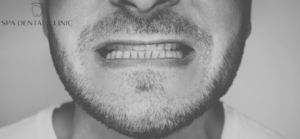What is diastema? Diastema meaning
Having gaps between your teeth, known as diastema, can be a distinctive feature of your smile. While some people wear their gaps with confidence, others may feel self-conscious and seek treatment options.
In this blog, we’ll explore what diastema means, what causes these gaps, and how they can be treated effectively. We aim to provide clear, friendly, and useful information to help you make informed decisions about your dental health.
What is diastema?
Diastema refers to a gap or space between two teeth, which is most commonly observed between the upper front teeth. However, gaps can occur between any two teeth. Understanding diastema is essential not only for cosmetic reasons but also for dental health considerations.
Several factors can contribute to the development of gaps between teeth, each with its own set of underlying causes:
Genetics: The spacing of your teeth can often be attributed to hereditary traits, much like the colour of your eyes or hair. Just as you might inherit your mother’s smile or your father’s eye colour, the natural spacing of your teeth can also be passed down through generations.
Gum disease: This is a significant factor in the formation of gaps. Inflamed gums, a symptom of gum disease, can weaken the tissues and bones that support teeth. Over time, this weakening can cause teeth to loosen and drift apart, creating noticeable gaps.
Mismatch between jaw size and teeth size: Sometimes, the architecture of your mouth can lead to spacing issues. If your jawbone is disproportionately large compared to your teeth, or if your teeth are unusually small, you might notice spaces developing between your teeth. This mismatch can affect how teeth align and space out over time.
Habits: Certain repetitive actions, especially in childhood, can influence tooth alignment and spacing. For example, thumb sucking is a common habit that exerts forward pressure on the teeth, often leading to the front teeth pulling away from each other. Similarly, prolonged use of a pacifier can have comparable effects.
Improper swallowing reflex: Also known as tongue thrusting, this condition involves the tongue pressing too firmly against the teeth while swallowing. Over time, this constant pressure can push the teeth outward, leading to gaps. This reflex is often seen in conjunction with other habits like prolonged thumb sucking.
Understanding these factors is crucial not only for identifying the cause of diastema but also for determining the most effective treatment approach. Each cause may suggest a different treatment strategy, ranging from orthodontic interventions to more targeted therapies like changing swallowing techniques or addressing gum health.
Treatment options for diastema
The approach to treating diastema largely depends on the underlying cause and the size of the gap between the teeth. Here are some focused dental treatments:
- Orthodontics: Orthodontic treatments, such as braces or Invisalign®, are commonly used to close gaps. These devices gradually shift the teeth into better alignment, effectively eliminating spaces.
- Veneers: Dental veneers are another excellent option for managing diastema. These thin porcelain shells are custom-made to cover the fronts of the teeth, offering a quick cosmetic solution to gaps by creating a uniform and seamless appearance.
- Dental bonding: This method involves the application of a tooth-coloured resin directly to the teeth. The resin is then shaped and hardened with a special light, which fills in the gaps and blends with the surrounding tooth structure.
These treatments each have unique benefits and considerations. The best approach will depend on individual dental health needs and aesthetic preferences, and should be chosen in consultation with a dental professional.
Conclusion
Understanding the causes and treatments of diastema can help you make informed decisions about your dental care. If you’re considering treatment for gaps in your teeth, book a consultation with us to discuss the best options for your specific needs. Remember, whether to treat a diastema often depends on personal choice and the advice of your dental professional.
By taking the time to care for your teeth and addressing any dental issues such as diastema, you can achieve a healthier, more confident smile.
If you have further questions, don’t hesitate to contact us! We are here to help you on your journey to a perfect smile.


